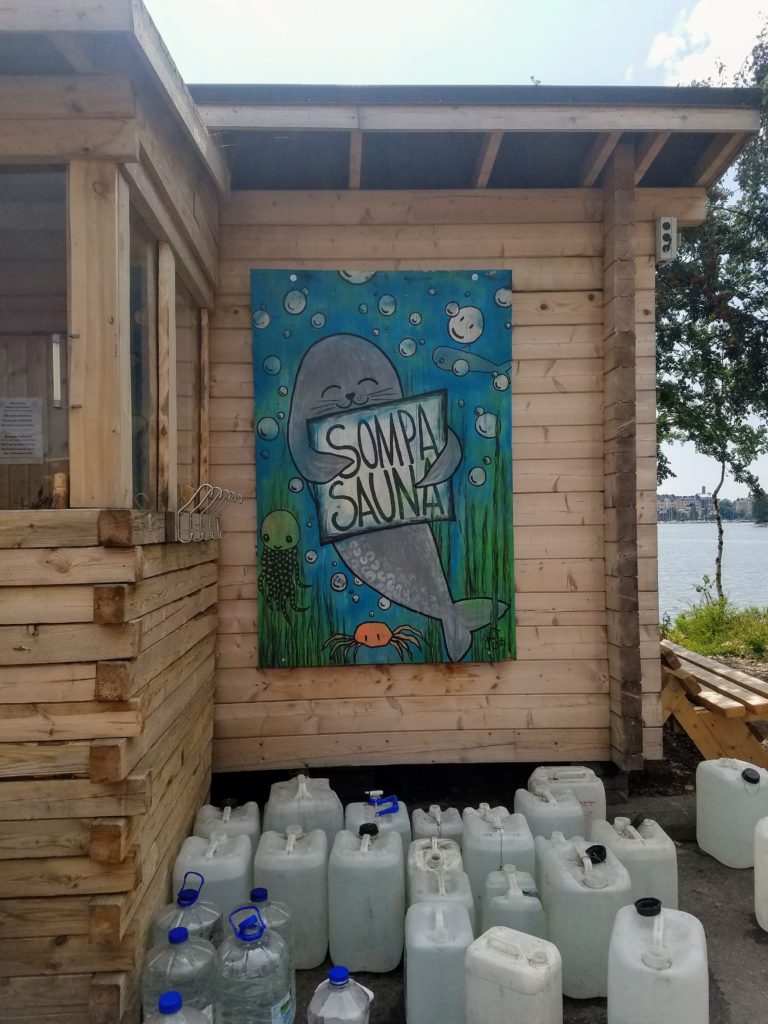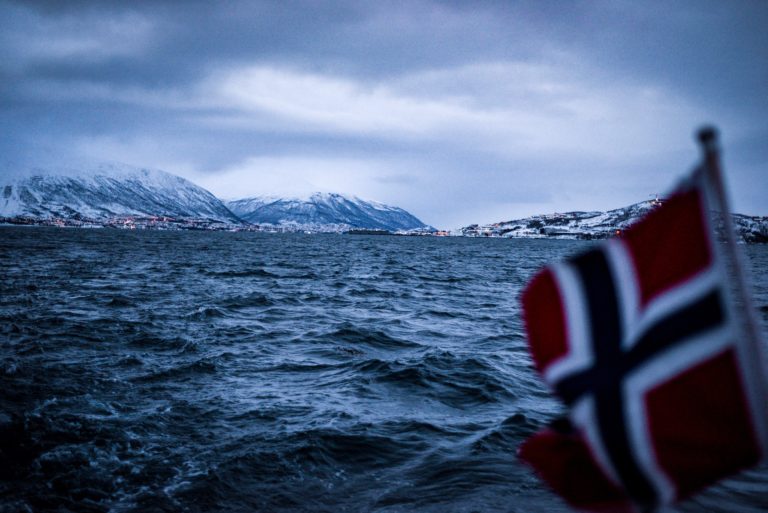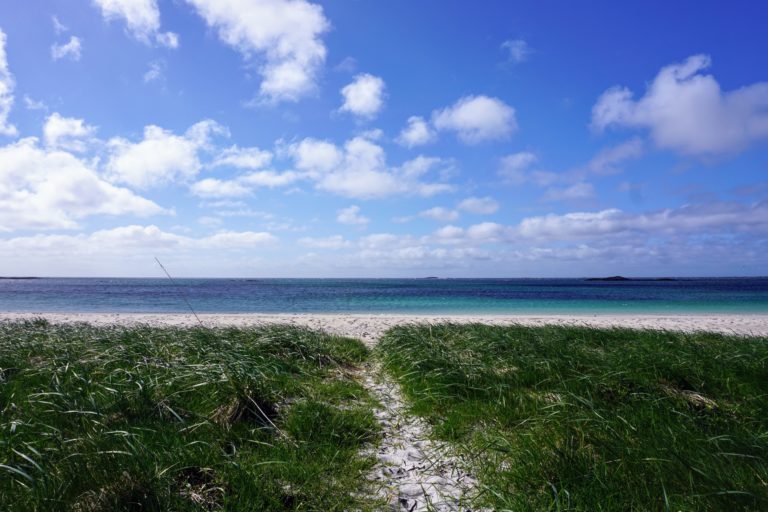I first experienced and fell in love with the sauna at Georgetown. I had become obsessed with the idea of doing a polar plunge and felt that I needed to train for it. In order to simulate the shock of jumping in near freezing water I would go in the sauna at Yates Field House until I was cooked and then step into a cold shower. After college I learned that the middle school a mile south of my house had a small sauna. The school gym was open to county residents outside of school hours so I would lift some weights then take a sauna once or twice a week. These were both typical American gym style saunas where the temperature rarely cracked 170 and steam was non existent. None of my friends took a sauna regularly and it was not something my family ever did. My love of the sauna (and my love of fish, potatoes, and dairy) led to my interest in Nordic culture and a decade later I quit my job to spend the summer up north.
I wanted to learn more about the sauna. Why was the sauna, and more generally the sweat bath, so common in some places but non-existent in others? What makes a good sauna? My first answers came when I signed up for a semester of Finnish language lessons. There is a school, the Global Language Network, that enlists local language speakers to teach free classes in DC. Due to the international nature of DC GLN is able to offer languages that are hard to find in traditional schools. My Finnish teacher taught us that the sauna should never be colder than 170F and that steam is required. She taught us to breathe through the mouth to protect the sinus tissue. She was the first to teach me about löyly. Later I picked up a copy of Sweat by Mikkel Aaland, a look at sweat culture around the globe. When I moved to San Francisco I discovered that he was a member of my swim club (where I sauna) and he has taught me about sweat culture over the occasional happy hour. The sauna had become a large enough part of my life that I frequently found myself in bath houses and spas while traveling. I began hosting a co-ed sauna night at my swim club. It was only a matter of time before I made a pilgrimage to the motherland and learned firsthand what the Finnish sauna experience entailed.
I started my trip in Norway where the badstue, the Norwegian bath, had fallen out of fashion upon the widespread adoption of Christianity. I kept my eyes peeled for a public badstue but being in the middle of nowhere I never found one. Each day I rode my bike and each night I stripped off my dirty clothes and put on my dry pajamas. It was cold at night so I rarely washed up, opting to wipe myself down quickly so that I could put warm clothes on again. I was on my own and, due to the cold weather, not sweating very much, so I continued on in my unshowered state from Trondheim to Nordkapp. By the time I arrived back in Tromsø I needed to bathe. The campground had a badstue in the shower building so I showered then hopped in the badstue to sweat out all the filth I had been accumulating. I felt good after my shower, my first in nearly a month, but it wasn’t until I was sweating that I felt clean again.
I have done most of my traveling alone. This is partly due to logistics and partly due to the desire for the independence that comes with solo travel. However, solo travel does not imply that one must be alone. I knew in advance that Norwegian and Finnish cultures are more reserved than Californian culture, and probably more than New England culture. One thing I didn’t think about before taking an extended bike trip was how to meet people. My longer solo trips were all designed around social experiences although I didn’t realize that until this trip. My travel in Asia followed popular backpacker routes, I stayed in hostels every night, and I frequently went diving or on tours where I met lots of people. My bike trips down the California coast have been along a very popular and social bike route. Most nights were spent in hiker-biker sites at campgrounds and I met many solo cyclists who I shared a meal with or joined for a moonlit hike.
I didn’t do much planning before this trip and I simply assumed that since the Norwegian coast is a relatively popular bike touring destination that I would meet plenty of other cyclists along the way. That was not true. I often didn’t start my day until late afternoon and spent most nights camping on my own. Occasionally I ran across the odd cyclist but most of my social interaction was at the grocery store while restocking supplies. For the first month this wasn’t a problem; I have a high degree of ability to be alone. After that, I started to miss human interaction.
How to meet new people while traveling has always been an interesting question for me. I only have a few rules when I travel, one of which is that I do not drink on my own and only in small quantities if I’m with people that I feel I can trust. Most people tell me that I should just go to a bar to have some social interaction but if you are alone and you aren’t drinking this is not a practical or fun option. In the Nordic countries it can also be an extremely expensive option. Campgrounds and hostels are great if you are in an area where these amenities exist because most people who are there are in the same situation as you. I often meet people at the beach or out hiking. On this trip I had an option for social interaction not available in most of the world: the public sauna.
Finnish people have a reputation for being reserved, even by Nordic standards. There’s a joke I heard several times when I told people I was headed to Finland.
Two Finnish men meet in a bar, they haven’t seen each other in over 30 years, but used to be best friends. One raises his beer and says ‘cheers’.
The other responds, ‘are we here to drink, or to talk?’
Fortunately for me the sauna has a different set of rules from the rest of the world. Within a minute of stepping into my first Finnish sauna someone had engaged me in conversation. As my eyes struggled to adjust to the darkness I discovered that there were several groups in the sauna. Some engaged in internal conversation, others chatting with new friends. I stepped out onto the sun deck with some of the guys I had just met and two of them realized that they had met in the same sauna the summer before and could now engage as proper friends instead of strangers.
The sauna is inclusive. Several times I stepped into the sauna while everyone was speaking Finnish. I would smile and nod, an act perfected over years of travel, but since sauna talk is rarely superficial at some point I’m expected to chime in and it becomes obvious that I speak no Finnish. At this point the entire conversation turns to English in order to accommodate my language handicap. This happened every time I went to a sauna where English wasn’t already being spoken. It happened without hesitation or question. It was a simple change that made me feel that I was being included in a culture that I obviously wasn’t a part of. It actually triggered a deep seated guilt about everyone conforming to my needs, yet I was so grateful that they did.
At a popular tourist sauna in Helsinki I met a group of Swedish-speaking Finns. They all lived in different places now but had met up in Helsinki before going to the Metallica concert that would be the largest event in Finland that summer. After chatting with one of them because he looked very cold after being in the water, the rest joined in and we had a great time at the sauna. They invited me out with them after we got dressed where they started teasing the first guy I had spoken with for growing soft and developing odd habits in Germany like speaking with strangers. By this point we had all been getting along very well and they had no issues with me being there but talking to strangers was still considered a foreign concept. I’m glad they were okay with it once the initial barrier was broken and we were no longer considered strangers.
Outside the sauna I still found the Finns unexpectedly friendly. I would mention this to a Finn who had stopped me for a chat and they would register their shock while their inclusion in this group of friendly Finns went unnoticed. I had have pleasant yet brief chats, one side in Finnish, the other in English, most of which I think were about adventures these older men had been on because I recognized city names and they were excited to see my bicycle. I was truly surprised based on what I had been told to expect yet it made sense. I often found that Finns were a bit mistrustful of their society, yet very trustworthy individuals. I was told over and over again to lock my bike up, to hide my belongings, yet I never met anyone who had any issues with theft. My levels of mistrust are sky high living in San Francisco so it was endearing to me to see people worried about bike theft yet totally comfortable leaving their bikes on a busy street with just the rear wheel locked to the frame.
After helping Mikkel Aaland film a segment for his documentary series The Perfect Sweat in Tromsø, I couldn’t stop thinking about a question he asked me: What is the perfect sweat? I’ve always thought that it should involve good company and a cold plunge nearby but I had not thought hard about it. I’ve been in many saunas in the US that were adequate but the best sauna I have found is at the Dolphin Club. The men’s sauna is very similar to what I would find in Finland: interesting conversation, heat, and enough steam to draw out a sweat. The women’s has potential but it generally doesn’t have many people in it when I go and it is too cold and dry to get the real feel of the sauna. The company is generally good but often non-existent.
I thought about the company that I kept in the sauna in Finland. Many public saunas are mixed gender but I also attended a few gender segregated saunas. I wondered about the experience of each. I have generally had more fun in mixed gender saunas but these are always social activities. When I go into the women’s sauna at the Dolphin Club it is usually after swimming by myself or when I need to get clean; only occasionally is the social element the focus. Was this difference between the gendered saunas unique to the Dolphin Club? I suspected that it was not but that the differences may not be global. In my experiences in both types, men are typically chattier and more open to speaking with strangers. In mixed gender saunas I was typically the only woman who came alone. The groups of women tended to stick together but the solo men tended to chat and the groups of men often reached out to people who weren’t in their group. I have experienced this in other contexts outside the sauna. It is almost always easier for me to make male friends when out on my own than to engage women in more than the most basic social niceties. I don’t mean to imply that women are not nice or friendly, rather, that men tend to be lonelier while out in public and more willing to look for new social stimulation.
The super obvious answer is that these guys are trying to pick me up, but I don’t think that this is the case as I’ve seen these same men reach out to other men and never got a sexual vibe. It may just be that groups of men are less inwardly focused than groups of women, or that men are less likely to go out alone in public and therefore have weaker ties to the people in their group. In mixed gender saunas I rarely saw mixed gender groups come in but mixed groups, formed at the sauna, sometimes left together. In Helsinki I saw many mixed gender couples, tourists, come because they wanted to be able to sauna together but in practice they ended up apart most of the time. One American man told me, shortly after his wife went outside to cool off, that they had come to this sauna so that they could be together but she doesn’t really like the heat so he was mostly in the sauna without her anyways.
Most people do not come to the Dolphin Club to sauna, they come to swim and use the sauna to warm up. In Finland, people come to sauna and swim to cool down. It doesn’t seem like a big difference on paper but culturally it means that the experience is primarily a social activity rather than a sporting activity. Rather than conversations being restricted to the time it takes one to feel normal again after swimming in cold water, conversations last as long as you’d like since they can drift from the sauna to the water to the deck outside and back into the sauna. Because you come and go from the sauna room, rather than just entering once, the conversation’s participants are constantly changing. Neither approach is wrong, it is simply a difference in which activity is of primary importance.

In the sauna everyone is equal. When everyone sits there, drenched in sweat, clothed in a swimsuit at most, you can’t tell who is poor or rich, a politician or a teacher, a banker or a social worker. There is a level of respect and inclusion in the sauna that is carried into the outside world. The person speaking at length about 18th century poetry may be your mail carrier and the history professor may have studied someplace you’re about to go to and can connect you with her friends in that area. The sauna has taught me that even when we are all stripped down we are all unique individuals with something to share and something to learn.


